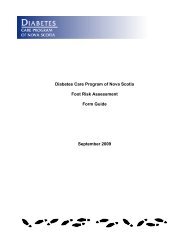CDE Appendix 1 Literature Review - Central East Local Health ...
CDE Appendix 1 Literature Review - Central East Local Health ...
CDE Appendix 1 Literature Review - Central East Local Health ...
Create successful ePaper yourself
Turn your PDF publications into a flip-book with our unique Google optimized e-Paper software.
The Culture, Diversity and Equity Project: <strong>Literature</strong> <strong>Review</strong><br />
Table 3.2: Examples of Disparities and Inequalities in <strong>Health</strong> and <strong>Health</strong> Care<br />
Source: Exworthy et al., 2006<br />
Ultimately, it is recommended by Mackenbach et al. (2002b) that both kinds of disparities (health status and<br />
healthcare) feature as objectives in any policy concerned with reducing health inequities.<br />
Scope<br />
<strong>Health</strong> Equity policies also vary considerably, internationally and intra-nationally, by the scope of ‘disadvantaged<br />
groups’ they consider and target, and the breadth of system areas or domains engaged by health equity policy<br />
initiatives.<br />
I. Breadth of disadvantaged groups considered<br />
The scope of disadvantaged groups targeted by health equity policies depends greatly on local histories and politics,<br />
and statistical/census data. US healthcare equity policies for instance tend to focus, almost exclusively, on racial and<br />
ethnic minorities, and rarely if ever speak in terms of socioeconomic status or class position, as is the norm in the<br />
European healthcare context.<br />
In the UK context, Strategic <strong>Health</strong> Authorities and the UK Department of <strong>Health</strong> focus in particular on six ‘equality<br />
strands’ – race, gender, disability, age, sexual orientation and gender identity, and religion and belief – and human<br />
57

















